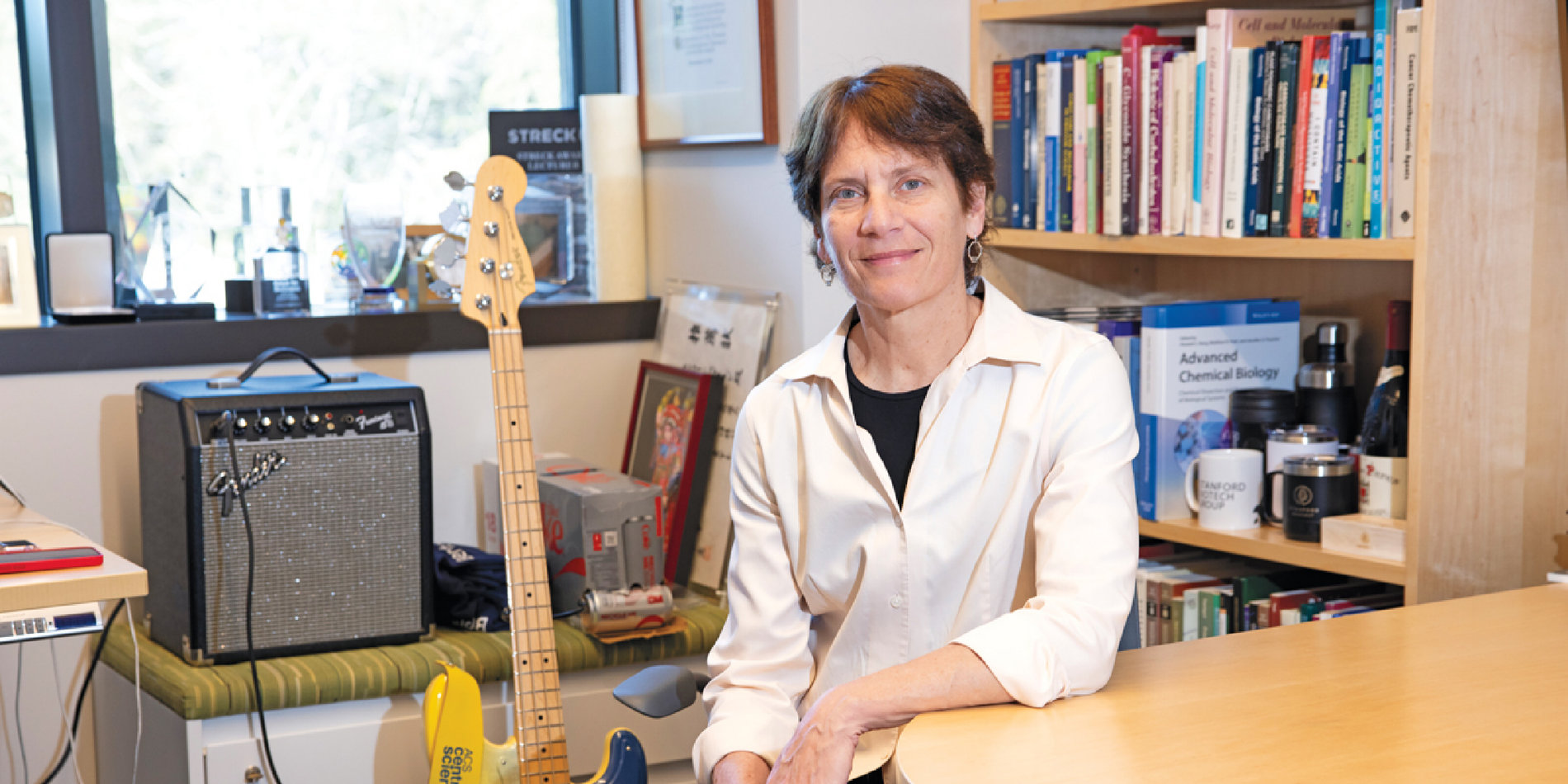Fordyce wins Eli Lilly Award in Biological Chemistry
Polly Fordyce, Institute Scholar at Sarafan ChEM-H, has been awarded the 2023 Eli Lilly Award in Biological Chemistry. The award is presented annually by the American Chemical Society’s Division of Biological Chemistry and recognizes a faculty member for outstanding research in biological chemistry of unusual merit and independence of thought and originality.

Fordyce, an associate professor of genetics and of bioengineering, has been recognized for her work developing tools that allow scientists to rapidly generate quantitative data about biological systems. Her lab designs and fabricates microfluidic devices containing channels the diameter of a human hair. Just as integrated circuits in electronics can precisely direct current to control electronic calculations, these devices can precisely manipulate tiny volumes of liquids to control biological reactions. The methods her lab has developed reduce the size of experiments involving biomolecules, like proteins, and speed the pace of discovery by making it possible to perform thousands of experiments in parallel. And her approach is adaptable, allowing them to tackle diverse biological problems.
“Polly is at the vanguard of bridging disciplines to improve human health, epitomizing the ethos of Sarafan ChEM-H,” said Carolyn Bertozzi, Baker Family Director of Sarafan ChEM-H.
Unexpected inspiration
A protein’s structure is determined by the sequence of molecular building blocks it is made of, and that structure impacts the way it interacts with other biomolecules and, therefore, how that protein functions in our cells. Despite impressive recent advances in understanding the links between building block sequence and structure, predicting a protein’s function from its building block sequence remains an unsolved problem. Generating more data could be the key to solving it.
Fordyce often draws an analogy between her approach and a perhaps unexpected field: meteorology.
“We have been able to get to the point of predicting the weather because all these people measured and made observations around the world, using a language of physical constants,” she said. “They didn't talk in relative terms about whether it was ‘a little hotter or wetter’ today than yesterday or than last week. But they measured things on an absolute scale, in temperature and precipitation.”
By combining those decades of data points with modern computing and algorithms, scientists were able to develop predictive models.
For scientists to get to the point of predicting a protein’s function just from knowing its sequence of building blocks, they first need large data sets in the “language of physical constants.” For enzymes, proteins that help kickstart chemical reactions, this could mean measuring how quickly they trigger a particular reaction in cells and how often it triggers that reaction rather than a different one.
“Polly has revolutionized the venerable field of enzymology, using modern technology like miniaturization, high throughput screening, and data science to provide insights that were impossible with the technology of yesterday,” said Bertozzi, who is the Anne T. and Robert M. Bass Professor in the School of Humanities and Sciences.
Forging collaborations, fueling discovery
For Fordyce, that enzymology revolution is amplified by collaborations across Stanford.
“I feel really fortunate that Stanford is such a supportive environment, where collaboration has been rewarded,” said Fordyce. “I’ve been lucky to work with brilliant senior colleagues like Dan Herschlag, Martha Cyert, and Chris Garcia, who see the value in working together.”
In one of her projects after she started her lab in 2014, Fordyce collaborated with Cyert, a professor of biology, to investigate how calcineurin, a protein that stimulates the immune system, recognizes its protein partners in the cell. Her lab’s long-standing collaboration with Herschlag, a professor of biochemistry, has resulted in a system to compress years of experiments on enzymes into weeks. And recently, she and Garcia, a professor of molecular and cellular physiology, developed a method to better predict which antigens will trigger specific immune cells to act by mimicking the physical forces acting in the body.
In these and other collaborations, Fordyce has developed new tools to better understand biological systems, including the mechanisms that control which proteins are produced in cells and how the immune system recognizes pathogens, using the language of physical constants.
The Eli Lilly Award in Biological Chemistry will be recognized at a special symposium as part of the Fall 2023 American Chemical Society National Meeting.
Fordyce is a member of Stanford Bio-X, SPARK, the Biophysics Program, and the Wu Tsai Neurosciences Institute, and is a Chan Zuckerberg Biohub investigator.



